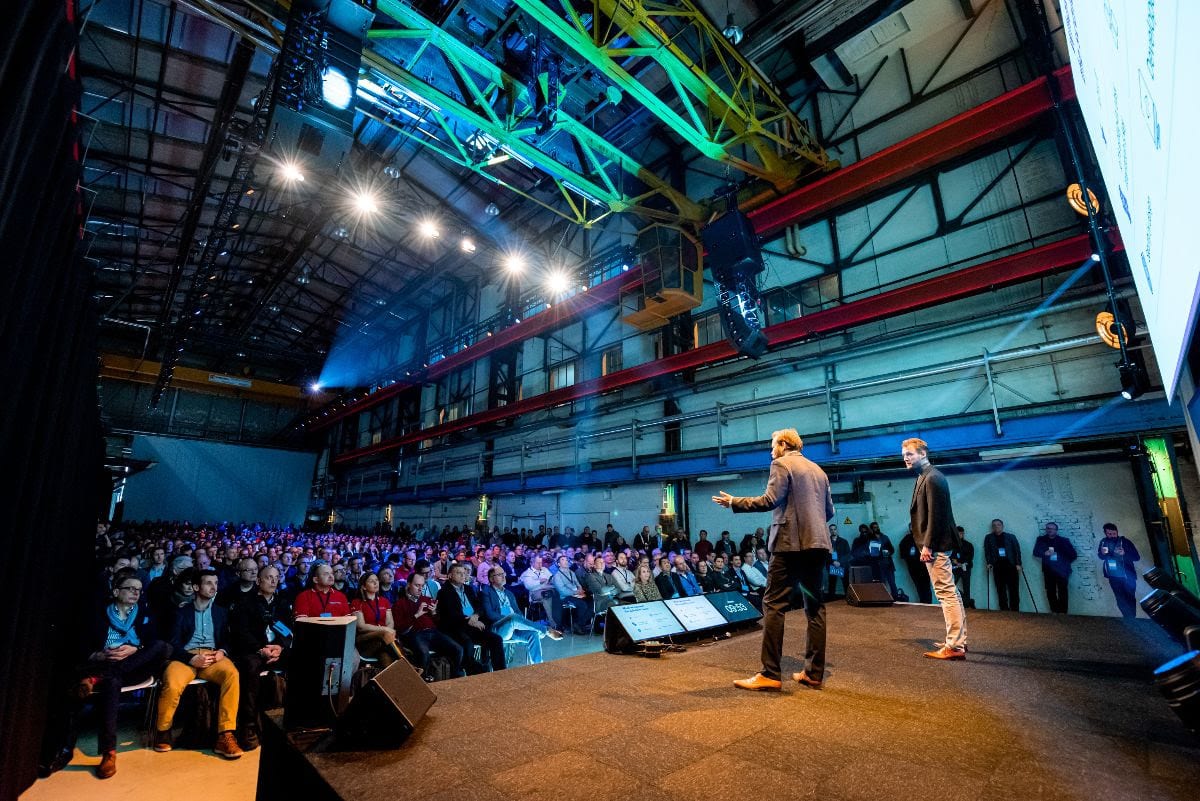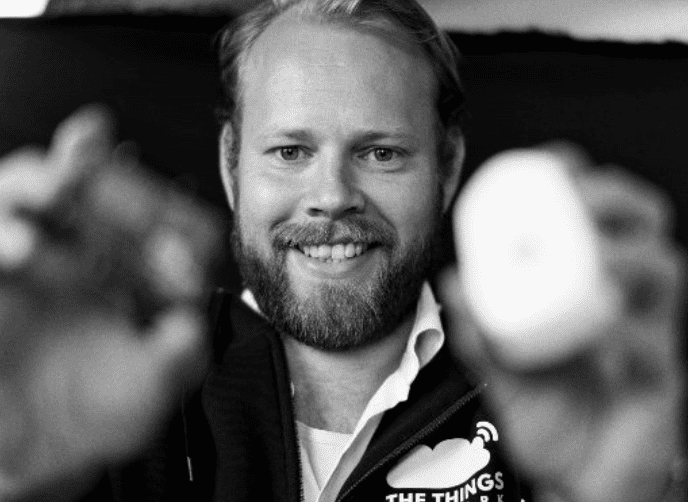Next week – in case you’ve been trapped under a heavy object, away from the business pages on social media – is The Things Conference, the annual LoRaWAN shindig in Amsterdam, hosted by the TTN/TTI Things collective. The show (September 22-23) has built a reputation as the go-to gathering for the IoT crowd – or for the LoRaWAN part of it, anyway. Unlike the blue-sky messaging that dominates bigger shows, the collective gaze here is fixed squarely on the road ahead.
It is a place to share “no-nonsense IoT knowledge”, reckons Wienke Giezeman, chief executive and co-founder at The Things Network / Industries (TTN/TTI) – and a place to return from with courage to put “fresh ideas” into practice. The point is, he says in conversation with Enterprise IoT Insights ahead of the show, to get to work on IoT, now, and to get a shift on – and to do it with partners in the ecosystem, and with old and new friends from a fuzzy 48 hours on the waterfront in the Dutch capital.
Giezeman is good with state-of-the-(IoT)-nation stuff, as he is with the minutiae of IoT business logic. There are some holdups, he explains, despite the internal and external pressures on enterprises to drive bottom-line efficiencies. “You need open-minded innovators that can break the innovator’s dilemma, and kill some darlings, and be unafraid of politics. That inspiration and bravery is on show [in Amsterdam] – large enterprises that are grasping the IoT opportunity with LoRaWAN, now.”
With courage – and IoT requires a leap of faith still, he acknowledges, even if it is written in scripture in Excel – comes success, the story goes. Giezeman says 95 percent of IoT cases are about efficiency, in the end, of one sort or another – of energy usage, or labour practices, just money flow – and returns should be pegged at five-times the investment, across the life of a solution. TTN/TTI has $200 million of IoT investments running via its back-end systems, set to deliver $1 billion in efficiencies, he says.
Which makes IoT worthwhile, in the end – for business, on both sides, and for the planet, on all sides. Giezeman is good with an analogy, too – and there are at least a couple of crackers in the full Q&A script below. “The idea of a one-stop IoT shop is like a microwave combi-oven – it is a bad microwave and a bad oven,” he says of the recent trend for consolidation in the IoT market, as a warning to continue to collaborate. We will leave the other one, about the right tool for the right job, for you to find.

– How do you assess the TTN/TTI story, as it is today? How should we think of the TTN/TTI collective – and the latest ecosystem party you are throwing in its name?
“We started off with the notion seven years ago that building IoT solutions is incredibly hard. We started The Things Network by building tools to make IoT easier for developers – so they would require fewer resources, and spend less time, and take less risk with their go-to-market projects in the IoT space. The idea behind The Things Industries was to monetize commercial use of these tools and services. Three years ago, we wrapped these products and services into a globally-scalable software-as-a-service offer – so that anybody could reliably build and deploy LoRaWAN networks and solutions.
“And the IoT market changed; most of it is being driven, now, by enterprises and not by operators. Combined with the low-code / no-code trend, and the return of the enterprise developer after the outsourcing boom in the late noughties, we now have this perfect breeding ground for enterprises to fully leverage the IoT tools and services out there to build their own solutions. We will end this year with over one million registered devices on our platforms. But we are super proud not only of the scale, but of the diversity.
“We have use cases ranging from tracking cows in fields in New Zealand, and for monitoring conveyor belts in mines in Chile. We have 150,000 smart water meters in the UK; we have hundreds of thousands of fridges and freezers monitored for food compliance reporting, and hundreds of thousands of workplaces monitored for occupancy and air quality. All of them are using our tools and platform, combined with gateways and devices from our manufacturer partners, and expertise from our SI partners. Success in IoT takes many contributors; our mantra, which we started out with, is ‘let’s build this thing together’. It is now more true than ever.”
– How do you assess the state of the IoT market, today, and the state of the LoRa/LoRaWAN market in particular – with reference, perhaps, to all the internal-industrial and external-global issues?
“After seven years in this game, the only thing that counts is value creation. We have had enough time to tinker; we now have to deliver. That is the way we see things. We will register our millionth device this year; each one of them is about $200 in terms of total cost of ownership – covering devices, platform, gateways, system integration, installation, and so on. So, as an installed base, that is already worth $200 million. Ninety-five percent of the use cases on our platform are about efficiency, and they – all of them, with a total tech investment of about $200 million – must have a five-times ROI, at least, across their lifespan.
“Which means delivering about $1 billion in efficiencies. We estimate that 30 percent of these savings are directly related to energy efficiency, another 30 percent are linked to labour efficiencies, and all the rest – 40 percent – comes through other op-ex reductions. And all of this means, ultimately, not just having staff do things that matter for your business, and having lower running costs, but also having lower emissions. And whatever you think of the multipliers and percentages, the model is hard to argue with – and as this thing grows, at 64 percent year-on-year, so efficiency grows at the same speed. And this is only our ecosystem of LoRaWAN use cases and solutions we are talking about.
Subscribe now to get the daily newsletter from RCR Wireless News
“The point is just, in response to your question, that this is why it counts, and how it counts now. The assessment is the value that IoT delivers – the cost of the solution relative to the cost of the problem. When that is clear, the funds will become available for the technology. There is some inertia within enterprises, still, but it is easing, and the assessment is clear. And the time-to-market and the time-to-value for the developer community are getting shorter.”
– What are the biggest challenges? Where might this whole story come unstuck? Be specific, be honest!
“So change happens when there is a will and a way, and a shove in the right direction, as well. The ability – the way – is clearly there. I mean, check out the show – and see 100-plus IoT devices in action. The will is there, too, because of the pressure to reduce op-ex, reduce labour costs, and reduce emissions. All of these are perfect problems for IoT. The other part, the prompt for enterprises, is not always there. You need open-minded innovators that can break the innovator’s dilemma, and kill some darlings, and be unafraid of politics. That inspiration and bravery is on show at The Things Conference – large enterprises that are grasping the IoT opportunity with LoRaWAN, now.”
– What of The Things Conference show? What else should we expect?
“Every year, I ask myself the same thing: Why should a large-scale LoRaWAN enterprise SaaS specialist do a conference? But this industry still needs a space to share no-nonsense IoT knowledge, where its members can come together, and go home loaded with fresh ideas to help customers. The guidelines for the show are, basically, that no customer cares about your business, just their own problems. Which is exactly how the IoT market needs to respond to enterprises. The customer knows the problem inside out. You don’t need to push a solution; you just need to provide the tools. I mean, there is this idea in the IoT space that if someone asks you for a screwdriver, you can also sell them a hammer. I have never seen that work.”
– Talk about the ‘wall of fame’ at the show, which is a major success – and appeared in Paris a couple of months back for the LoRaWAN World Expo?
“So everything you see on that wall is real and can be deployed now – and if it is not, we make that clear. What is special is we have this large wall of sensors, which you can touch and experience, and this large digital twin alongside, which we have built with five different platform partners. And so in two days, you know who-is-who and what-is-what in the LoRaWAN world. And so, the Monday after the event, you can start to cherry pick your favourites, and take the components that bring you a benefit.”
– What is your favourite IoT solution, at the moment?
“The ELSYS Eco, by far. It is just a marvellous piece of engineering. It raises the bar for any device maker. It is made of sustainable biodegradable components. It uses a solar panel so it doesn’t have batteries to be replaced – meaning its lifespan goes beyond 10 years. It is amazing. Look it up.”
– Looking forward, what are your big hopes (and fears) for your side of the IoT industry?
“I hope that – in a period of market consolidation – everyone stays focused on what they do best. I see more and more that the big successes in the IoT market come about by combining the best components in one solution – and not by companies that try to do it all themselves. The idea of a one-stop IoT shop is like a microwave combi-oven – it is a bad microwave and a bad oven.”

